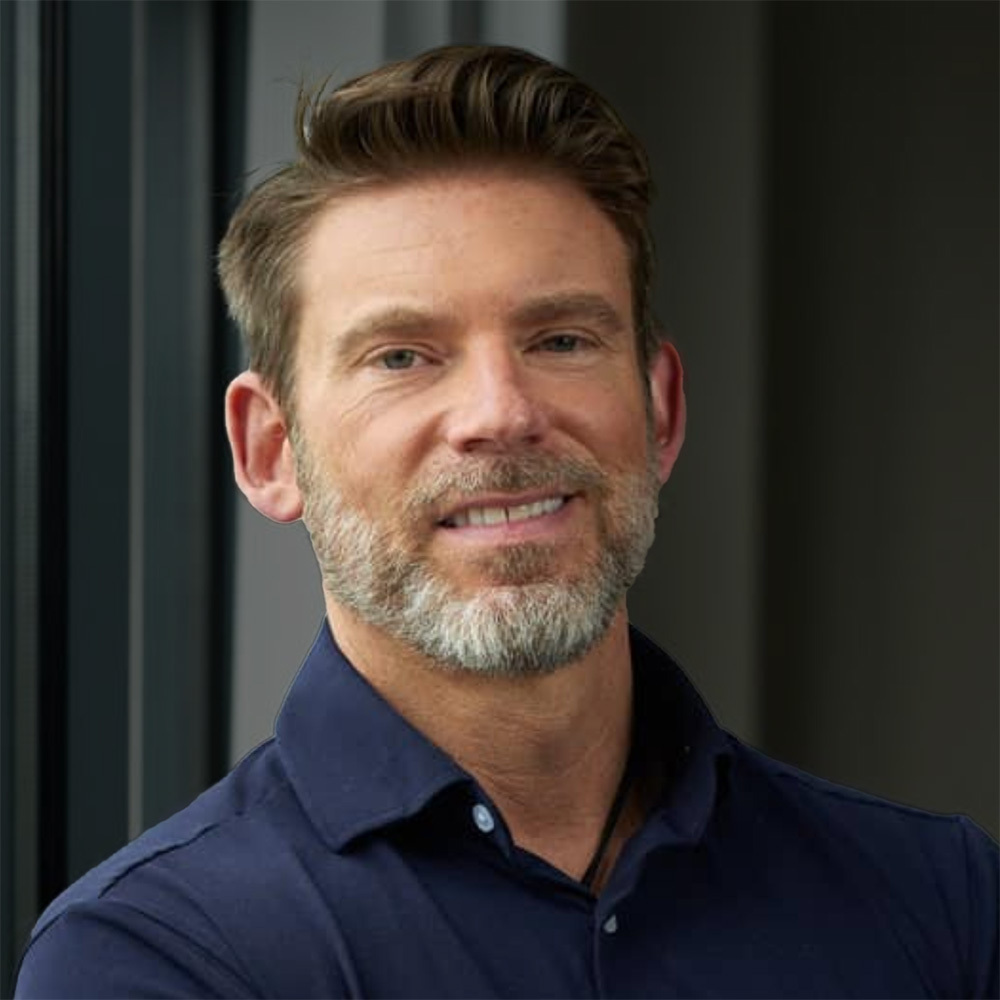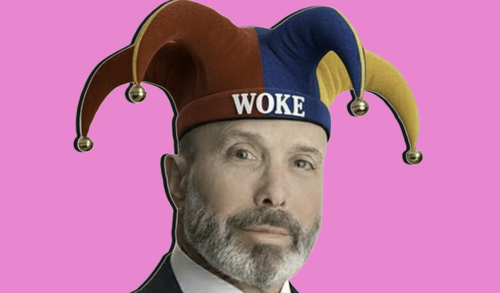Antidepressants Increase 130% for Teen Girls, Drop 7% For Boys
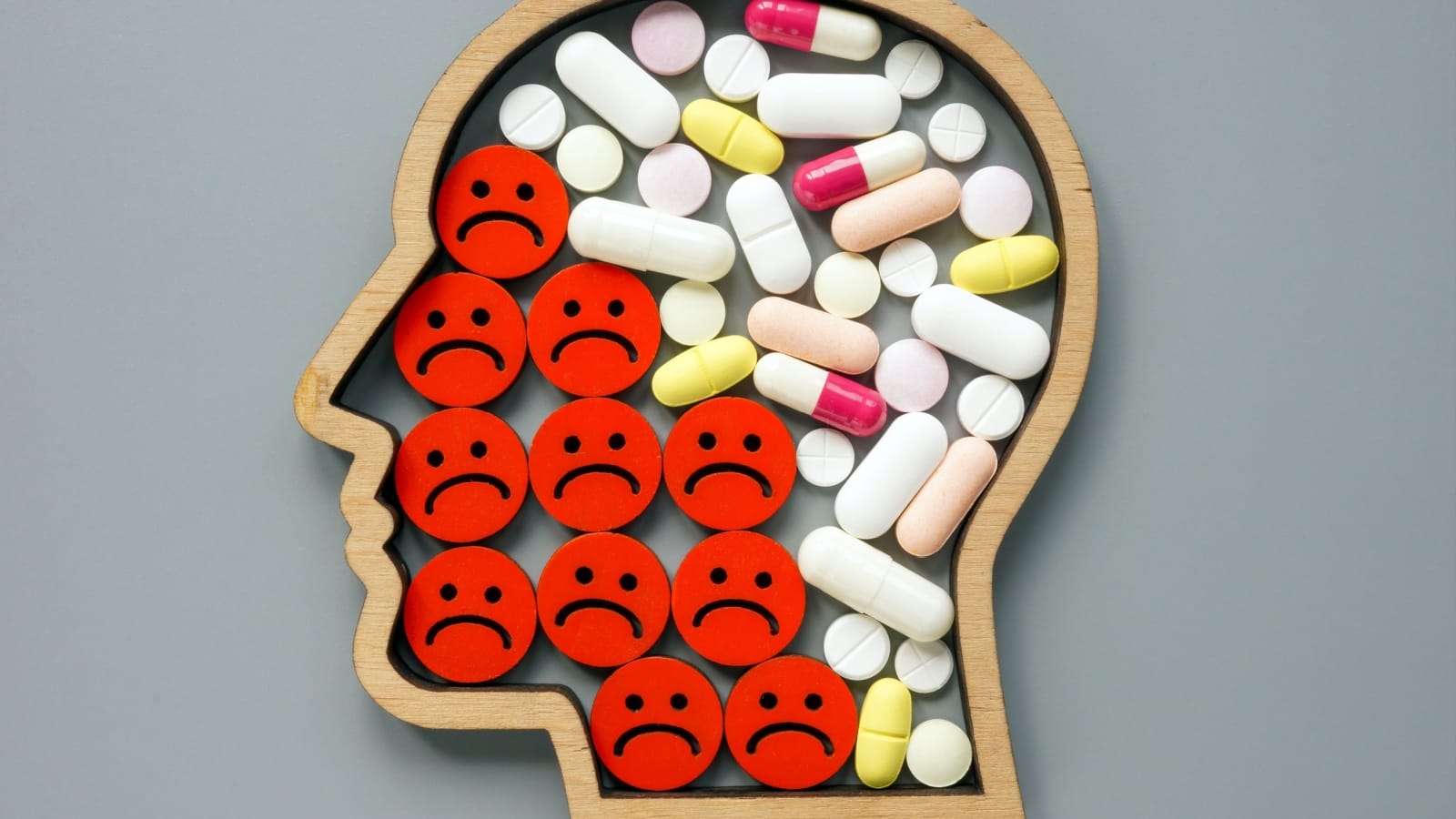
Let me ask you something.
What are the odds that one-third of American adolescents suddenly developed a disease requiring drugs that carry a BLACK BOX WARNING for suicide? What mysterious plague swept through middle and high schools demanding 8.3 million kids be put on medications that literally more than double their risk of killing themselves?
And here’s where it gets truly insane: This so-called mental illness epidemic somehow infected ONLY teenage girls while miraculously sparing boys entirely?
I know exactly when I realized we’d lost our collective minds. It was 2020-2021, watching the parade of teenage girls through my center. Every week, more of them. Each one clutching an SSRI prescription like a badge of honor, proof that their suffering was real, that they weren’t making it up. The drug had become their validation. Without it, they were just dramatic teenagers. With it, they had a legitimate medical condition.
They’d been told they needed these drugs. Not might benefit from them. Not could try them. NEEDED them. Like diabetics need insulin. And they believed it.
I started my podcast, started screaming into the void on Twitter about what I was witnessing. The response? I was anti-science. I was dangerous. I was the crazy one for suggesting that maybe, just maybe, medicating an entire generation of teenage girls wasn’t normal.
But I wasn’t crazy. A recent study in Pediatrics just proved everything I was warning about. Between 2020 and 2022, antidepressant prescriptions for girls aged 12-17 skyrocketed by 130%.
One hundred and thirty percent. In two years.
Meanwhile, Prescriptions for Boys the Same Age Actually DROPPED by 7.1%
Same pandemic. Same lockdowns and isolation. But somehow this plague of depression that requires dangerous psychiatric drugs only attacked girls? Boys were immune?
The researchers’ explanation exposes the whole scam: “Cultural norms often socialize girls toward expressing internalizing behaviors such as anxiety and depression, whereas boys may exhibit more externalizing behaviors.”
Harvard researchers analyzed data on 4 million children and found that teenage girls experienced a 22% jump in emergency room visits for “mental health challenges” during the pandemic. Boys? No such increase. The researchers’ solution? “Improvements in both outpatient and inpatient mental health care.”
Translation: We need more ways to diagnose and drug these girls. Girls talk about their feelings. Guess which one gets mood and mind-altering psychiatric drugs?
Then I stood up at an FDA panel about SSRIs in pregnancy and said what should be obvious: Maybe women aren’t mentally ill. Maybe they just feel things more deeply than men. Maybe that’s a gift, not a disease. Maybe we’re drugging them at more than double the rate of men not because they’re broken, but because they can actually describe their emotions.
NBC News nearly had an aneurysm. They ran a hit piece claiming I said this “without evidence,” carefully editing out the part where I was discussing how we’re exposing developing babies to brain-altering chemicals. They couldn’t let people hear that we’re conducting an uncontrolled experiment on pregnant women and their babies. Why? Because their entire business model depends on pharmaceutical advertising dollars.
This is the same system that’s drugging pregnant women at unprecedented rates. The same system that starts girls on these drugs at 15, then keeps them dependent through pregnancy, exposing their babies to chemicals that cross the placenta and alter fetal brain development. The same system I challenged at that FDA panel, which sent NBC’s pharmaceutical overlords into damage control mode.
We’re watching the pharmaceutical colonization of the female mind, from adolescence through motherhood. And the weapon they’re using? Women’s own emotional intelligence. Their ability to articulate what they’re feeling.
One in three teenagers. On antidepressant drugs.
And when someone like me points out this insanity, I become the crazy one. Not the system drugging millions of teenage girls.
Me.
For questioning it.
Being Female Is a Mental Illness
You know how they diagnose depression to justify a powerful mood and mind-altering drug? They ask you questions. That’s it. No blood test. No brain scan. Just a conversation where if you say the wrong things to the wrong person, congratulations, you have a “disease.”
What is happening with adolescent girls that makes them so susceptible to this malpractice?
During puberty, the female brain undergoes massive reorganization. The prefrontal cortex, responsible for emotional regulation and social cognition, develops differently in girls than boys. Estrogen and progesterone fluctuations don’t just affect mood; they’re actively rewiring neural pathways for enhanced emotional processing, social awareness, and interpersonal communication. This isn’t random chaos. It’s a critical developmental window.
Those hormonal surges that psychiatry calls “mood instability?” They’re preparing the female brain for the complex emotional and social tasks that have ensured human survival for millennia. The ability to track multiple emotional states simultaneously, to read micro-expressions, to detect subtle changes in infant behavior before clinical symptoms appear; these aren’t accidents. They’re evolutionary adaptations that take years to develop, with the most intense period occurring during adolescence.
During puberty areas of the brain responsible for emotional processing, empathy, and social cognition show increased connectivity and activity. The teenage girl who feels everything intensely isn’t experiencing a disorder. She’s experiencing normal adolescent neurodevelopment. Her brain is literally building the architecture for sophisticated emotional intelligence that doesn’t exist at the same level in males.
But a 15-year-old girl experiencing these developmental surges for the first time doesn’t have the framework to understand what’s happening. Her brain is undergoing its most significant reorganization since toddlerhood. Neural pruning, myelination, and hormonal influences are creating new capacities for emotional depth and social understanding. Of course it feels overwhelming. Of course it’s intense.
And what do we do? We look at this normal developmental process and say, “You’re bipolar. You’re depressed. Here’s a drug that will stabilize your mood.”
We’re not treating illness. We’re chemically disrupting critical neurodevelopment during the most important period of emotional maturation.
Meanwhile, a boy who can’t handle his emotions punches a wall, gets into fights, breaks his gaming controller, or storms out of the house slamming doors. ‘Boys will be boys,’ everyone says. Or maybe, just maybe, someone suggests ADHD.
But let’s appreciate the absurdity here: A boys struggle with emotion regulation? More likely to be normalized. A girl describes her feelings to the wrong person at the wrong time? Major Depressive Disorder. Anxiety Disorder. SSRI prescription.
Trust me, nobody’s rushing that boy to the pediatrician for an emergency psych evaluation. Nobody’s frantically calling therapists demanding the first available appointment. His rage isn’t a symptom, it’s testosterone. His violent outburst isn’t a crisis, it’s a phase. He’ll grow out of it, they say. Boys mature slower. Give him time. Let him blow off steam. The same behavior in girls would be called “emotional dysregulation” and medicated immediately.
Teachers handle it differently too. A boy acting out gets detention, maybe suspension. A girl crying in the bathroom gets a guidance counselor referral and a suggestion to “talk to someone.” The boy’s externalized distress is seen as a discipline issue. The girl’s internalized distress is seen as a mental health crisis.
Even when boys do end up in therapy, watch what happens. They sit there, practically mute, offering nothing but shrugs and monosyllables. After three sessions of “I don’t know” and “It’s fine,” everyone gives up. “He’s not ready for therapy,” they say. No diagnosis. No medication. Just a collective shrug that boys don’t do feelings.
The girl who walks in with a journal full of detailed emotional observations? She’s diagnosed within the hour.
A girl talks about her emotions. She journals. She processes. She shows up to therapy ready to explore every nuance of her pain. And this emotional literacy, this developing ability to map her inner terrain, becomes her psychiatric death sentence.
The exact same life event, the exact same stressor. But the boy who can only grunt “I’m fine” keeps his brain chemistry intact. The girl who says “I’ve been feeling really sad since my parents divorced” gets diagnosed with Major Depressive Disorder and prescribed drugs with suicide warnings.
From the moment she could speak, we taught her that talking about feelings is healthy. We celebrated her emotional expressiveness. We prepared her perfectly to walk into a psychiatrist’s office and provide the exact testimony needed for her own conviction.
The 130% increase for girls, while boys’ prescriptions dropped? That’s proof psychiatric diagnoses are invalid constructs dressed up as science. Real diseases don’t discriminate based on emotional vocabulary. But psychiatric ‘disorders’ apparently do.
Here’s the dirty secret: You can’t receive FDA approval for a drug to “treat” setbacks in life. The expected emotional challenges that humans must navigate. The physical and emotional turbulence of adolescence. Those aren’t billable medical conditions. You must create the disease to sell the cure.
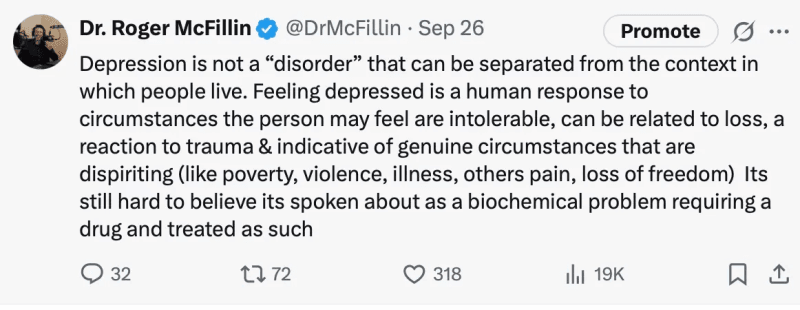
The fact that boys escape diagnosis isn’t evidence that girls are sicker. It’s evidence that this entire system is built on turning emotional expression into profitable pathology. And girls just happen to be better at providing the testimony needed for their own psychiatric conviction.
They Target the Most Vulnerable
It’s always the same girls who get caught in the psychiatric web. The sensitive ones. The creative ones. The ones who feel everything deeply, who absorb others’ pain, who actually care deeply about the suffering in the world.
These aren’t symptoms of illness. These are the characteristics of future healers, artists, mothers, community builders. But at 14, when these capacities first emerge during the chaos of puberty, they’re overwhelming. She doesn’t have language for why she feels everyone’s emotions. She doesn’t understand that this sensitivity is an evolutionary advantage, not a defect.
So when she seeks help understanding these intense feelings, the trap springs. Birth control at 14 for “painful periods.” SSRIs at 15 when the birth control causes depression. Adderall at 16 when the SSRIs cause brain fog. Mood stabilizers at 17. Antipsychotics at 18. What starts as one prescription becomes five. Her sensitivity hasn’t been nurtured into strength. It’s been chemically suppressed into numbness.
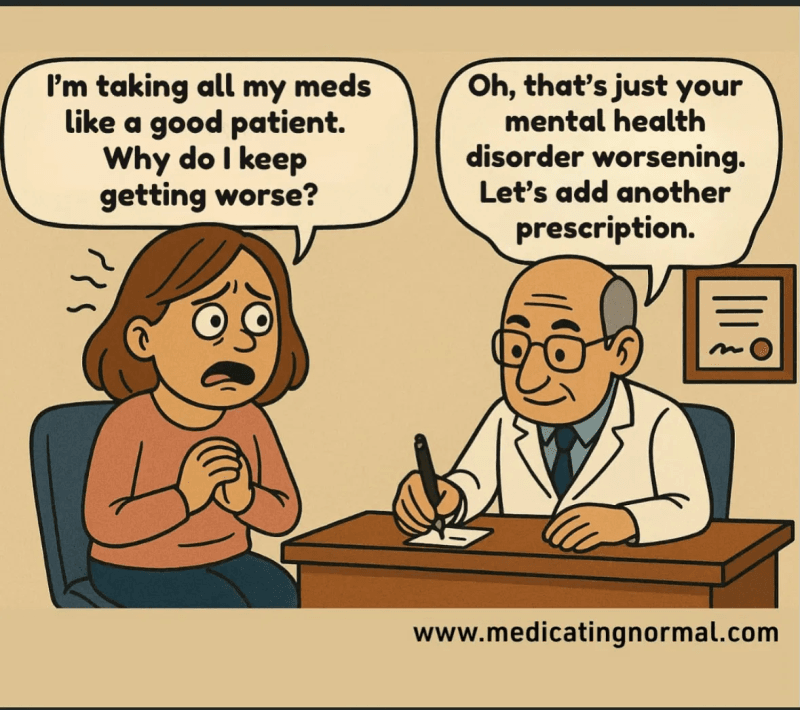
And God help her if she’s also traumatized.
When a girl experiences sexual assault (one in four will before age 18), her body responds exactly as it should. Hypervigilance keeps her watching for danger. Rage is her power trying to return. Dissociation protects her from unbearable pain. These are perfectly functioning survival responses.
But psychiatry interprets these symptoms according to their DSM. They diagnose her hypervigilance as “anxiety disorder.” Her rage becomes “bipolar.” Her dissociation gets labeled “borderline personality.” Now they can prescribe SSRIs to numb the emotions she needs to feel. Antipsychotics to suppress the rage that could fuel recovery. Benzodiazepines to prevent natural coping mechanisms from developing.
Years later, she’s carrying unprocessed trauma plus five new diagnoses and an ever-changing medication regimen. She’s been convinced she’s “mentally ill” when she’s actually injured. Told her brain is broken when it’s working perfectly to protect her.
The sensitive girl seeking understanding and the traumatized girl seeking healing both end up in the same place: chemically lobotomized, diagnosed with multiple disorders, and convinced their natural responses to life and trauma are symptoms of disease.
We’re not treating illness. We’re destroying the very girls who have the emotional depth to heal themselves and others. The ones who feel most deeply are the ones we drug most aggressively.
The Attack on Life Itself
Evolution worked perfectly for millions of years. Then suddenly, right when we started pushing psychiatric drugs on everyone, one-third of teenage girls became mentally ill? What are the odds that female adolescence became a disease at the precise moment someone figured out how to sell the cure?
Zero. The odds are zero.
A woman connected to her emotional truth knows when she’s being lied to. She feels deception in her body. She senses danger before it materializes. She recognizes predators who would harm her children. She builds networks of trust and mutual aid that don’t require government intervention. She creates communities that operate outside systems of control.
This is divine feminine energy. Not some mystical concept, but the raw power of intuitive knowing that has guided human survival for millennia. The ability to feel truth rather than just think it. To know without being told. To sense what cannot be measured.
This cannot be governed. It cannot be regulated. It cannot be controlled.
Unless you convince her it’s mental illness.
This antihuman agenda serves specific interests: institutions that require obedient populations, not questioning ones. Systems that profit when women trade their inner knowing for expert opinion. Power structures that cannot survive communities of women who trust their instincts over official stories.
A woman disconnected from her emotional intelligence is a woman who needs constant external validation. She needs experts to tell her what’s real. She needs authorities to interpret her own experience. She needs medication to manage what she once navigated naturally.
She becomes the perfect citizen: dependent, doubtful, and docile.
Look at the pattern: Start drugging girls at peak fertility. Convince them that their emotions are diseased precisely when they’re developing the capacity for deep bonding and reproduction. Keep them medicated through their childbearing years. If they do have children, those children are exposed to psychiatric drugs in utero, born neurologically altered, less capable of the emotional bonds that create resistance to authority.
Meanwhile, we’ve turned reproduction itself into a battlefield. We don’t just support reproductive choice; we’re told to “celebrate” ending life as empowerment. Not the right to choose, but the act itself as liberation. We’ve made creating life seem like oppression while making ending it seem like freedom.
We’ve divided men and women into warring camps. Men are toxic predators. Women are hysterical victims. Traditional partnerships are patriarchal oppression. The nuclear family is a prison. Every natural bond that might create children and raise them outside state influence has been reframed as problematic.
And through it all, we keep drugging the girls who feel too much. The ones whose emotions are too intense. The ones who might grow up to be women who trust their intuition over expert opinion, who choose their instincts over institutional authority, who build communities of care that don’t need corporate or government management.
The 130% increase in psychiatric drugs for teenage girls isn’t a medical phenomenon. It’s social engineering. They’re not treating illness. They’re neutralizing the exact population that has always been the keeper of emotional wisdom, community bonds, and life itself.
A generation of women on SSRIs cannot feel when they’re being exploited. Cannot sense when their children are in danger. Cannot access the righteous rage that fuels revolution. Cannot build the emotional bonds that create ungovernable communities.
Every teenage girl convinced that her emotions are symptoms is being severed from power that terrifies those who would control us. Every dose of SSRIs is a vote for a world where human intuition is replaced by expert opinion, where emotional knowing is replaced by pharmaceutical management, where the divine feminine is replaced by chemical numbness.
Emotions aren’t just feelings. They’re energy. They’re our direct line to divine intelligence, the channel through which God speaks to us. That gut feeling that saves your life? That’s divine communication. That fierce maternal love? That’s God’s power flowing through you. That intuitive knowing that defies logic? That’s your connection to something infinitely greater than yourself.
And they’re medicating it into silence.
This isn’t healthcare. It’s a coordinated attack on human nature.
Republished from the author’s Substack
-

Dr. Roger McFillin, the provocative voice behind the Radically Genuine Podcast, is a Clinical Psychologist with over two decades of experience. He’s on a determined mission to expose the harsh truths about the mental health industry that others avoid or overlook. Ranked in the top 1% of global podcast downloads and reaching listeners in over 150 countries, this isn’t just another self-help show. It’s a hard-hitting exploration of what it really takes to overcome life’s toughest challenges, free from the constraints of traditional therapy-speak. Dr. McFillin offers unfiltered insights and evidence-based strategies, challenging mainstream mental health narratives and empowering listeners to rethink their approach to well-being.
Recent Top Stories
Sorry, we couldn't find any posts. Please try a different search.
